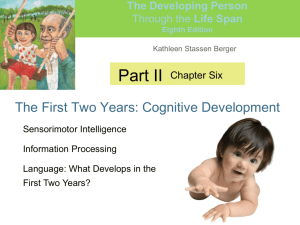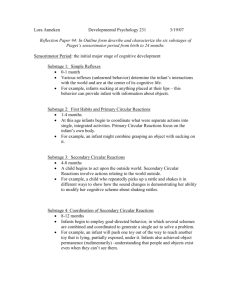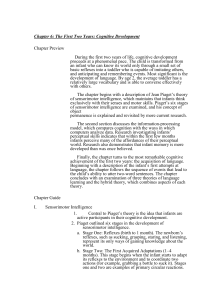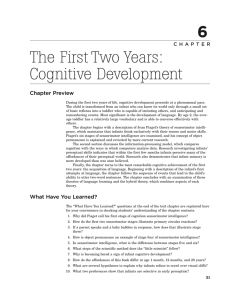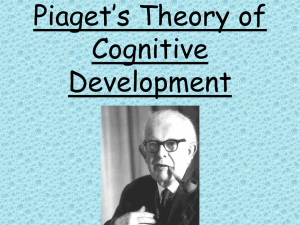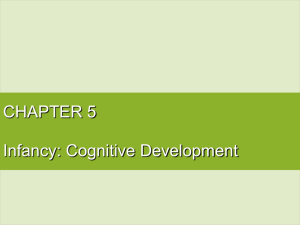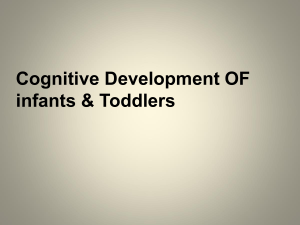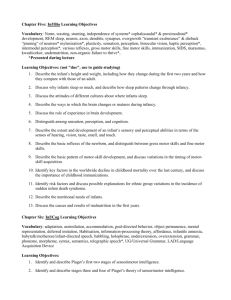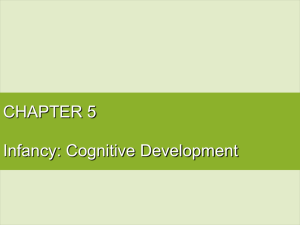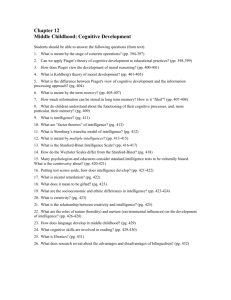Psychology 21 –Developmental Psychology: The Child
advertisement
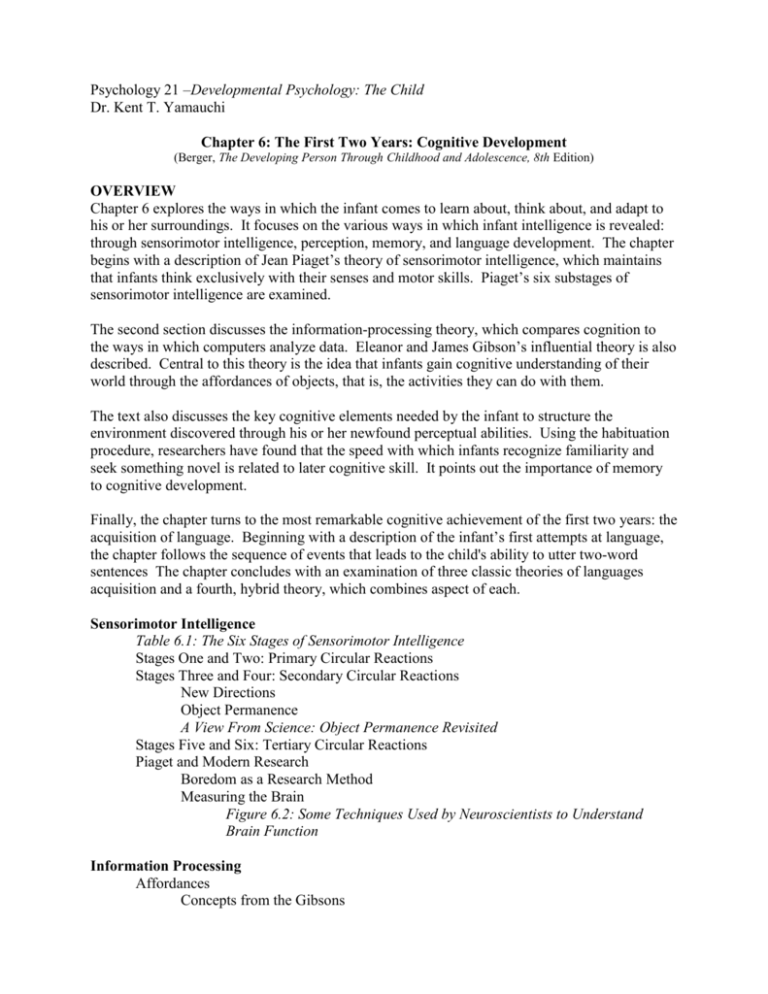
Psychology 21 –Developmental Psychology: The Child Dr. Kent T. Yamauchi Chapter 6: The First Two Years: Cognitive Development (Berger, The Developing Person Through Childhood and Adolescence, 8th Edition) OVERVIEW Chapter 6 explores the ways in which the infant comes to learn about, think about, and adapt to his or her surroundings. It focuses on the various ways in which infant intelligence is revealed: through sensorimotor intelligence, perception, memory, and language development. The chapter begins with a description of Jean Piaget’s theory of sensorimotor intelligence, which maintains that infants think exclusively with their senses and motor skills. Piaget’s six substages of sensorimotor intelligence are examined. The second section discusses the information-processing theory, which compares cognition to the ways in which computers analyze data. Eleanor and James Gibson’s influential theory is also described. Central to this theory is the idea that infants gain cognitive understanding of their world through the affordances of objects, that is, the activities they can do with them. The text also discusses the key cognitive elements needed by the infant to structure the environment discovered through his or her newfound perceptual abilities. Using the habituation procedure, researchers have found that the speed with which infants recognize familiarity and seek something novel is related to later cognitive skill. It points out the importance of memory to cognitive development. Finally, the chapter turns to the most remarkable cognitive achievement of the first two years: the acquisition of language. Beginning with a description of the infant’s first attempts at language, the chapter follows the sequence of events that leads to the child's ability to utter two-word sentences The chapter concludes with an examination of three classic theories of languages acquisition and a fourth, hybrid theory, which combines aspect of each. Sensorimotor Intelligence Table 6.1: The Six Stages of Sensorimotor Intelligence Stages One and Two: Primary Circular Reactions Stages Three and Four: Secondary Circular Reactions New Directions Object Permanence A View From Science: Object Permanence Revisited Stages Five and Six: Tertiary Circular Reactions Piaget and Modern Research Boredom as a Research Method Measuring the Brain Figure 6.2: Some Techniques Used by Neuroscientists to Understand Brain Function Information Processing Affordances Concepts from the Gibsons Movement People Memory Reminders and Repetition A Little Older, a Little More Memory Aspects of Memory Language: What Develops in the First Two Years? The Universal Sequence Table 6.3: At About This Time: The Development of Spoken Language in the First Two Years Listening and Responding Babbling First Words The Naming Explosion Cultural Differences Putting Words Together Theories of Language Learning Theory One: Infants Need to Be Taught Figure 6.1: Maternal Responsiveness and Infants’ Language Acquisition Theory Two: Infants Teach Themselves Theory Three: Social Impulses Foster Infant Language Learning A Hybrid Theory Summary 2
